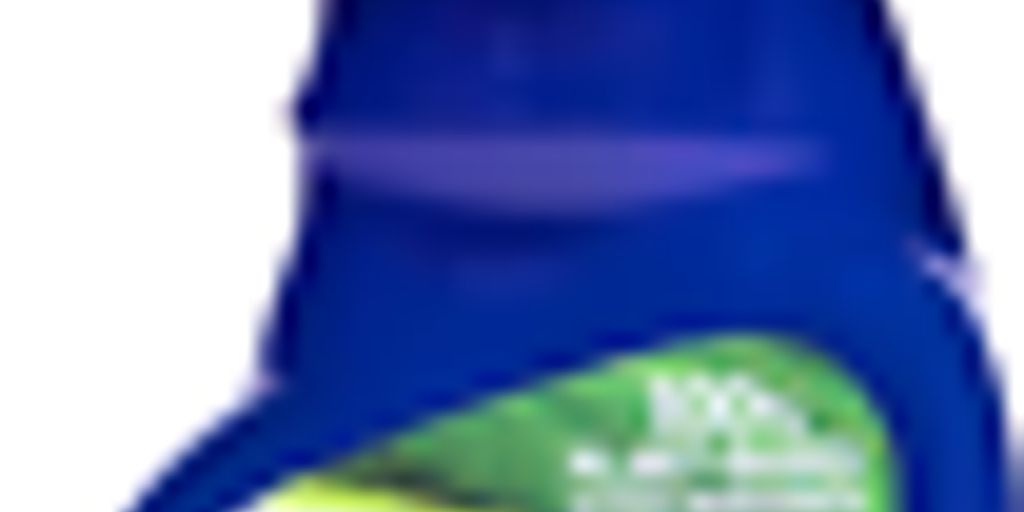
How to Choose the Best Yoga Mat Cleaner for a Hygienic Practice
Choosing the right yoga mat cleaner is essential for maintaining a healthy and enjoyable practice. A clean mat not only helps you stay healthy but also makes your yoga sessions more pleasant. This guide will walk you through everything you need to know to pick the best cleaner for your yoga mat.
Key Takeaways
- A clean yoga mat is important for good health and a better yoga experience.
- There are different types of cleaners, including natural, chemical, sprays, wipes, and DIY options.
- Look for cleaners with essential oils and non-toxic ingredients, and avoid harmful chemicals.
- Follow a regular cleaning routine and store your mat properly to make it last longer.
- You can make your own cleaner using simple ingredients like vinegar and essential oils.
Understanding the Importance of a Clean Yoga Mat
Health Benefits of a Clean Mat
Keeping your yoga mat clean is crucial for your health. A clean mat helps prevent skin infections and other health issues. When you practice on a dirty mat, you expose yourself to harmful germs and bacteria. This can lead to skin rashes, allergies, and even more serious infections. Regular cleaning ensures that your mat is free from these harmful elements.
Impact on Yoga Practice
A clean yoga mat can greatly improve your yoga practice. When your mat is clean, it provides better grip and stability. This helps you maintain your poses without slipping. Practicing on a dirty mat can be distracting and uncomfortable. It can also cause you to lose focus, which can affect your overall performance.
Common Germs and Bacteria on Mats
Yoga mats can harbor a variety of germs and bacteria. Some common ones include Staphylococcus, which can cause skin infections, and E. coli, which can lead to stomach issues. Fungi and viruses can also be present on your mat. Regular cleaning helps to eliminate these harmful microorganisms, keeping your mat safe for use.
Regularly cleaning your yoga mat is essential for a healthy and enjoyable practice. It not only protects you from harmful germs but also enhances your overall yoga experience.
Types of Yoga Mat Cleaners
Choosing the right yoga mat cleaner is essential for maintaining a hygienic practice. There are various types of cleaners available, each with its own benefits and drawbacks.
Natural vs. Chemical Cleaners
When it comes to yoga mat cleaners, you can choose between natural and chemical options. Natural cleaners often use ingredients like essential oils and vinegar, which are gentle on your mat and the environment. On the other hand, chemical cleaners may offer stronger disinfection but can be harsh on your mat and skin.
Sprays, Wipes, and Solutions
Yoga mat cleaners come in different forms, including sprays, wipes, and solutions. Sprays are convenient for quick cleaning, while wipes are great for on-the-go use. Solutions usually require mixing with water and can be used for a more thorough cleaning.
DIY Yoga Mat Cleaners
If you prefer a more personalized approach, you can make your own yoga mat cleaner at home. DIY cleaners allow you to control the ingredients and customize the scent. Common ingredients include vinegar, water, and essential oils.
Keeping your yoga mat clean not only enhances your practice but also extends the life of your mat.
Key Ingredients to Look for in a Yoga Mat Cleaner
Essential Oils for Disinfection
Essential oils are a great addition to yoga mat cleaners because they have natural disinfecting properties. Oils like tea tree, lavender, and eucalyptus not only kill germs but also leave a pleasant scent. Tea tree oil is especially effective against bacteria and fungi, making it a popular choice.
Non-Toxic and Eco-Friendly Ingredients
When choosing a yoga mat cleaner, it's important to look for non-toxic and eco-friendly ingredients. These cleaners are safe for both you and the environment. Ingredients like vinegar, baking soda, and plant-based surfactants are excellent choices. They clean effectively without leaving harmful residues.
Ingredients to Avoid
Some ingredients can be harmful to your health and the environment. Avoid cleaners with harsh chemicals like bleach, ammonia, and synthetic fragrances. These can cause skin irritation and damage your mat over time. Instead, opt for natural and gentle ingredients to keep your mat in good condition.
How to Properly Clean Your Yoga Mat
Step-by-Step Cleaning Guide
To keep your yoga mat in top shape, follow these steps:
- Prepare your cleaning solution: Combine a squirt of mild dish soap or yoga mat cleaner with 3-5 drops of essential oil and warm water in a sprayer.
- Spray the solution evenly across the mat.
- Wipe down the mat with a clean cloth.
- Rinse the mat with water to remove any soap residue.
- Let the mat air dry completely before rolling it up.
Frequency of Cleaning
It's important to clean your yoga mat regularly. For those who practice daily, a weekly cleaning is recommended. If you practice less often, cleaning your mat once a month should suffice.
Drying and Storage Tips
After cleaning, always let your mat dry completely. Hang it over a shower rod or lay it flat in a well-ventilated area. Store your mat in a cool, dry place to prevent mold and mildew. Avoid leaving it in direct sunlight for long periods, as this can cause the material to break down faster.
Regular cleaning and proper storage will help extend the life of your yoga mat and keep your practice hygienic.
Top-Rated Yoga Mat Cleaners on the Market
When looking for the best yoga mat cleaner, it's essential to consider popular brands and products, customer reviews and ratings, and where to buy. Finding a high-quality cleaner can help maintain your yoga mat for longevity and ensure a hygienic practice. Explore top yoga mat cleaners, eco-friendly options, cleaning tips, and storage advice for a fresh mat.
DIY Yoga Mat Cleaner Recipes
Simple Vinegar-Based Cleaner
A vinegar-based cleaner is a great way to cleanse your mind and body with a DIY yoga mat cleaner. It's easy to make and very effective. Just mix equal parts of water and white vinegar in a spray bottle. Add a few drops of your favorite essential oil for a pleasant scent. Spray the solution on your mat and wipe it down with a clean cloth.
Essential Oil Blends
Essential oils not only smell good but also have natural disinfectant properties. You can create a powerful cleaner by combining tea tree oil, lavender oil, and eucalyptus oil with water. This blend will help keep your mat free from germs and bacteria.
Tips for Customizing Your Cleaner
You can customize your cleaner to suit your needs. For example, if you prefer a stronger scent, add more essential oils. If you have sensitive skin, use less vinegar. The key is to find a balance that works for you. Remember, the importance of regular cleaning for hygiene, performance, and safety cannot be overstated.
Regular cleaning of your yoga mat is crucial for maintaining its longevity and ensuring a hygienic practice. DIY cleaner recipes and proper cleaning techniques can make this task simple and effective.
Maintaining Your Yoga Mat for Longevity
To keep your yoga mat in good condition for a long time, it's important to establish a regular cleaning routine. Properly storing your mat when not in use can also help extend its lifespan. Knowing when it's time to replace your mat is crucial for maintaining a hygienic practice. Remember, mindful maintenance is key to making your mat last longer.
Taking care of your yoga mat is key to making it last longer. Clean it regularly and store it properly to keep it in good shape. For more tips on how to maintain your mat, visit our website. You'll find everything you need to keep your mat looking and feeling great.
Conclusion
Choosing the right yoga mat cleaner is important for keeping your practice clean and safe. By considering factors like ingredients, ease of use, and scent, you can find a cleaner that fits your needs. Remember to clean your mat regularly to prevent germs and dirt from building up. A clean mat not only helps you stay healthy but also makes your yoga practice more enjoyable. Take the time to find the best cleaner for you, and your mat will thank you for it.
Frequently Asked Questions
Why is it important to clean my yoga mat?
Cleaning your yoga mat is crucial because it helps remove dirt, sweat, and germs. This keeps you healthy and makes your yoga practice more enjoyable.
How often should I clean my yoga mat?
It's a good idea to clean your yoga mat after every use. If that's not possible, aim for at least once a week to keep it fresh and hygienic.
Can I use household cleaners on my yoga mat?
It's best to avoid household cleaners as they may contain harsh chemicals that can damage your mat. Instead, use cleaners specifically made for yoga mats or make a DIY cleaner with natural ingredients.
What ingredients should I look for in a yoga mat cleaner?
Look for natural ingredients like essential oils, which help disinfect, and eco-friendly ingredients that are safe for you and the environment. Avoid harsh chemicals that can be harmful.
Can I make my own yoga mat cleaner?
Yes, you can! A simple DIY cleaner can be made with water, vinegar, and a few drops of essential oils. This is a cost-effective and natural way to keep your mat clean.
How should I store my yoga mat after cleaning it?
After cleaning, let your mat dry completely before rolling it up. Store it in a cool, dry place to prevent mold and mildew. Proper storage helps your mat last longer.

